In
my last post I wrote about the importance of affordable and user friendly
camcorders that anyone can get to film precious memories or start them on their
professional filmmaking career. Now it is time to talk about photographic
cameras that fall under the same category, which is why I will be talking about
the compact digital camera, the Nikon Coolpix S01.
As
mentioned in both the Philips VKR6847 Explorer Camcorder post and the Panasonic/National
NV-M5 Camcorder post, the invention of smaller and cheaper camera equipment set
forth a new way of documenting human history. The same could be said about
compact digital cameras. Mirrorless and easy point-and-shoot mechanics, the
compact camera has the advantages of being: “easy to use, contain liquid
crystal display (LCD) screens and image management software which allows the
user to select and edit images, cheaper price. The quality of image from a
compact camera with higher resolution can be considered of “good” quality digital
image,” (MediaLab 2024).
As
Veldman (2024) points out, camera companies made a quick profit off of selling
compact digital cameras and that once they hit the market nearly every
household had one ready to be used of every family gathering and writes: “You
most likely remember lining up at family gatherings for the obligatory group
photos, grinning while blinded by the camera flash.”
It
was also, as mentioned above, that it was an easy, fun and cheaper way to
introduce the art of photography to a new generation, allowing them to play
around, experiment and learn the fundamentals before moving to industry
standard (aka more expensive) cameras.
But
as Veldman (2024) further writes, this camera isn’t something to underestimate,
after all, “…it’s not the camera that makes the shot; it’s the photographer
that makes the shot…” and that (as Chase Jarvis said) “the best camera is the
one you have with you.”
Not
only that, but as mentioned in the Panasonic/National NV-M5 Camcorder post, if
you want to give something an old or nostalgic feel, then it is better to use
something that is old. So, instead of using filters that cheapen the aesthetic,
just use a real compact digital camera.
After
all, how else can you capture the feel and look of the mid to late 2000s Indie
Sleaze look and feel without the “the high-contrast Polaroids and flash-lit
photography that prevailed at the time.” (Dinsdale 2022)
Now
let’s start with the history of the Nikon company history. Nikon was founded in
1917 and was first called Nippon Kogaku K.K. or Japan Optical Industries Co.,
Ltd. (AboutPhotogarphy 2023), which was a merger of three optical firms (Nippon
Kogaku Klub) and was a response to the need and national urgency for advance
optical instruments, which was lead by the then president and nephew’s founder
of Mitsubishi Koyata Iwasaki (Nikon 2024).
The
Nikon company started out manufacturing ridgefinders and microscopes, but it
was later that a need for optical instruments became evident that Nikon led to
the “combining the optical instruments division of the Tokyo Keiki company and
the mirror division of Iwaki Glass with Fujii Lens Manufacturing. This merger
gave rise to Nippon Kogaku K.K. and, subsequently, the Nikon of today.” (Nikon
2024)
By
1933 Nippon Kogaku K.K. manufactured the NIKKOR lens, made for aerial
photography and map making. They came in two lenses, the 70cm F5 and the 18cm
F4.5, which set Nikon on a path to create high-performance lenses. (Nikon 2024)
In
1946 the name Nikon came into being when the call for domestically made cameras
was in high demand “the company came up with the tentative name
"Nikorette" to express compactness while building on the
"Nikko" abbreviation of its Nippon Kogaku name at the time. However,
due to opinions that this was a weak-sounding name for a product destined to be
a major future player, the company used the Nikko base and added an N to the
end which creates a more masculine impression in the Japanese language, and
thus the official Nikon name was born.” (Nikon 2024)
By
1948, Nikon released its first camera the Nikon Model I, by 1957 it was the
Nikon SP (a ridgefinder camera). Then in 1959, they released the Nikon F, a SLR
camera, that had an interchangeable lens feature. This set them on a path of
being associated with quality photographic cameras because in the coming years
they made big leaps in the advancements of lenses and underwater cameras, that
by 1971 they caught the eye of NASA and commissioned space approved cameras for
the 17 missions and the Apollo 15 launch, which was known as the Nikon Photomic
FTN camera. They carried on building, improving and even made many “firsts” in
the camera industry until the Nikon name was so popular that in 1988, the Nippon
Kogaku K.K. or Japan Optical Industries Co., Ltd., changed the company name to
the Nikon Coperation and in 2003, got its iconic yellow logo that “symbolized
the concept of ‘fusing the future possibilities with reliability’.” (Admin
2017)
Now
this was a bit more in-depth then I thought I would go, but I will close off
the history lesson by relating it back to the object of this post and that is
by stating that Nikon released their Coolpix cameras in 1997. (Admin 2017)
But
the compact digital camera goes as far back as 1988, with the introduction of
the FUJIX DS-1P (Stapley 2022) and “…could store 10 images on a 2MB SRAM card
and in the near future it was intended to use a compression method of 1:8 so
that up to 40 images could be stored. The original press release states that
images could be played back by means of an exclusive player and there was talk
of a video printer. Also the camera was able to store voice or sound
simultaneously and the camera was referred to as a ‘Future Electronic Still
Camera’.” (Digitalkamera Museum 2024)
.png) |
| FUJIX DS-1P. Image Source: https://www.digitalkameramuseum.de/en/cameras/item/fujix-ds-1p-3 |
Digital
compact cameras, as mentioned above, was part of the Indie Sleaze aesthetic,
which used the flash application of the compact digital cameras to take messy
and high contrasting photos.
It
was also a part of the 2010s mirrorless revolution. Where “…compact system
cameras, as they were also known – often seemed to be marketed with an air of
apology for not being DSLRs.” (Stapley 2022)
Now
for a simpler explanation of the history of the Coolpix brand, because I fear I
might overdo it, here is an excerpt from Nikon (2010):
“The
history of the COOLPIX series began in 1997 with the COOLPIX 100. The camera
was slim enough to fit in a jacket pocket and was equipped with an innovative
new PC card function that allowed the camera body itself to be connected
directly to a computer for data transfer. Nikon has continued to lead the
digital camera industry since then by developing and releasing models with
revolutionary new features. The COOLPIX 900, released in 1998, offered a swivel
design that allowed the lens portion to be rotated up to 270°. In 2005, Nikon
released the COOLPIX 5900/7600/7900 with the revolutionary Face-priority AF
(autofocus) function that automatically recognized faces with autofocusing and
the COOLPIX P1, the world's first camera equipped with a wireless LAN communication
function for transferring images over a wireless network. The COOLPIX S500,
released in 2007, had the world's most compact body and also offered the
fastest power-up and release time lag (at the time), and the COOLPIX S1000pj,
released in 2009, was the world's first camera to be equipped with a compact
projector. With a total of 100 COOLPIX models released, Nikon continues its tradition of
innovation in 2010 with the release of the COOLPIX S1100pj, the second COOLPIX
camera to be equipped with a built-in projector, and the COOLPIX S5100 with a
number of functions that enable the capture of beautiful night time shots. The
COOLPIX brand continues to offer increases in basic camera performance as well
as new and advanced digital technologies for new value and user benefits.”
Now for the thing we are all here for, the Nikon Coolpix S01 compact digital camera. This is one of the smallest digital cameras I have seen and have the dimensions of 3.1 in. (77 mm) x 2.1 in. (51.2 mm) x 0.7 in. (17.2 mm) (Nikon), making it almost as small (maybe even smaller) than a business card. But make no mistake, as the old saying goes, all good things come in small packages.
The
Nikon Coolpix S01 has a max internal storage of 7.4GB, take photos, videos with
sound and also has the ability to playback said video. According to Nikon it
can shoot in 30fps and in both HD (128x720p) and SD (640x480) for up to 29min
for one single shoot (page 12 of the reference manual).
The
camera has features that are automatic, such as auto focus, that activates when
a face is detected or puts focus in the middle of the frame when the zoom is
activated or if there is no face. But not all is lost because the user does
have some control. As stated on page 14 of the manual: “Although the focus area
may still be displayed or the infocus indicator light green, the camera may
fail to focus if the subject is very dark, fast-moving, mixes areas of sharply
contrasting brightness (e.g., is half in the shade) or near and distant objects
(e.g., is behind the bars of a cage), is dominated by regular geometric
patterns (e.g., venetian blinds or a row of windows in a skyscraper), or
contrasts poorly with the background (e.g., is the same color as the
background). Should this occur, try pressing the shutter-release button halfway
a second time or recomposing the photograph.”
The
AF comes in two options, that is made for the movie (film) feature. First,
which is the default setting, is AF-S or Single AF, “Choose if the distance to
the subject will not change very much during recording. Focus locks when
recording starts” and AF-F or Full Time AF, “Choose if the distance to the
subject is likely to change during recording. Focus is adjusted during
recording.”
Another automatic feature is the built-in flash. The flash, when set to auto, will only go off if a lack of clarity is detected, but the flash can be turned on for every shot or turned off completely.
The camera monitor is touch screen control and has an anti-refection coating, with the dimensions of 2.5 inches and a sensor size of 1/2.9 inches (Nikon). The camera is easy to use with clear instructions and is as simple to navigate as any camera app on a smart phone.
.png) |
| Scene Modes, Page 12 Reference Manual |
And
on page 42 the manual lists the many filters that can be applied.
.png) |
| Camera Filter Options, Page 14 Reference Manual |
The
ISO of the camera is between 80 -1600 and appears to also be automatic (Stoker
2012), and seems to be set by the camera depending on the motion detection,
which bumps up the ISO sensitivity the more motion there is. It also changes
depending on the zoom setting as well.
It also has a time and date setting, I know, not that interesting, but this camera has a time zone setting, where you pick the country you are shooting in, giving a more accurate time and date, even after many years of inactivation.
The camera has a NIKKOR 3x Optical Zoom lens with a focal length of 4.1-12.3mm and f/stop of 1:3.3-5.9. The lens has an electronic lens that opens when the camera is switched on. The lens is also a retractable lens, that expands out when switched on and retracts when switched off. Giving it a stylish look and feel as well as makes it easier to carry on the user’s pocket, but this is also a down side because this means it is a fixed lens and can’t be interchangeable.
“All
of the sample images in this review were taken using the 10-megapixel High JPEG
setting, which gives an average image size of around 2.5Mb. As a snapshot
camera pure and simple, we're not expecting the Nikon Coolpix S01's image
quality to astound in any way, shape or form. But, to be critical for a moment,
at maximum wideangle setting we are noticing some loss of focus towards the
extreme corners of the frame, whilst pixel fringing is visible in high contrast
portions of images. Neither is a surprise. What is however, is that there is a
fair level of detail captured too if conditions are right - and some quite
pleasant results are possible, as hopefully our sample images here demonstrate.
Colours are also realistically natural without being washed out or faded.
Because the flash is so weeny, it works fairly well for indoor shots and
portraits in that it's not powerful enough to bleach your subject.”
.png) |
| Zoom In/Out diagram, Page 14 Reference Manual |
Now
let’s talk about the camera body. First is the retractable lens, mentioned
above. Second is the built-in flash. Third is the Self-timer lamp/ AF-assist
illuminator and fourth is the speaker, which is just a small pin hole next to
the lens.
On
the top is the Shutter button, with the zoom mechanism around it. Next to it is
the playback/photo display button, which is one of two ways to view images and
videos, the second is to go into the main menu on the touch screen and select the
gallery labelled as “Play”.
What is interesting about the Nikon Coolpix S01 is the different ways photos can be seen. One is to press the Playback button and manually scroll through the images and use the zoom function to inspect the image (and even retouch the image) or turn on the Slideshow function to view them in order of when they were taken.
But video can’t be edited, just watched, with play/pause, fast
forward/rewind etc. with sound playing from the small mono built-in speaker.
But
these are not the only things that the camera can do. There are controls to set
the White Balance, exposure, self-timer and much more. To read about everything
this camera has to offer, please read the manual here:
https://cdn-10.nikon-cdn.com/pdf/manuals/coolpix/S01RM_EN.pdf
The
fun thing about this camera is that it comes in different colours. This
particular model is chrome or as it is called “The Mirrored Version”. Other
colours include white, red, pink and silver (Stoker 2012).
 |
| Nikon Coolpix S01 Colour Options. Image(s) Source: https://www.nikonusa.com/p/coolpix-s01/26347/overview |
The
year of this camera’s release seems to be 2012.
Evidence comes from Stoker’s (2012) review that was posted in December
of 2012 and states “Just in the (Saint) nick of time to catch the lucrative
Christmas (of 2012) gifting market, the Nikon S01 arrives to a fanfare
heralding it as the smallest Coolpix to date.”
This
date is also confirmed by other reviewers, like Grinning Cheek to Cheek’s
(2012) review, where it is a paid promotion for the camera’s release before
Christmas and the comments going as far back as December of 2012.
Now
for the brief explanation on how the compact digital camera works, with a brief
explanation from an excerpt from Faith’s (2023) article, because like everything
above I fear I might overcomplicate things. So without a further ado, here is
Faith (2023) to give it to you straight:
“A
compact digital camera works by capturing light through a lens and converting
it into digital signals that can be stored on a memory card. The lens focuses
the light onto a sensor, which is made up of millions of tiny light-sensitive
pixels. These pixels convert the light into electrical signals, which are then
processed by the camera's image processor to create a digital image.
One
of the key components of a compact digital camera is the LCD screen. This
screen allows the user to preview the image before taking the shot, and also
provides a way to review the images that have already been taken. The LCD
screen is made up of thousands of tiny pixels that display the image in
real-time. The latest point of view is that many compact digital cameras now
feature touchscreens, which allow for more intuitive control and navigation.
Another
important aspect of a compact digital camera is the image processor. This
processor is responsible for processing the digital signals from the sensor and
creating a final image that can be stored on the memory card. The latest point
of view is that many cameras now feature advanced image processing algorithms
that can enhance the image quality and reduce noise in low-light conditions.
In
conclusion, a compact digital camera works by capturing light through a lens
and converting it into digital signals that can be stored on a memory card. The
LCD screen allows for previewing and reviewing images, while the image
processor is responsible for creating the final image. With the latest
advancements in technology, compact digital cameras are becoming more powerful
and feature-rich, making them a popular choice for both amateur and
professional photographers.”
I
know I say this a lot, but I really believed this was going to be a short one,
but if there is anything this post proves is that bigger isn’t always better
and that this camera is small, but mighty.
Thank
you for making it to the end and as always, I hope you enjoyed this as much as
I did researching it.
If you want to help this site out, please consider joining my Patreon: patreon.com/OnlineCurator
Please see the Please help this site post on this blog, for more information.
List of sources:
Admin. 2017. Nikon’s
100 years of imaging excellence (brief history of Nikon). https://nikonrumors.com/2017/09/21/nikons-100-years-of-imaging-excellence-brief-history-of-nikon.aspx/
Digitalkamera Museum.
2024. Fujix DS-1P (1988). https://www.digitalkameramuseum.de/en/cameras/item/fujix-ds-1p-3
Dinsdale, E. 2022. Indie
sleaze dispatches: nostalgic photos of mid-00s London. https://www.dazeddigital.com/art-photography/article/55369/1/indie-sleaze-rebecca-zephyr-thomas-london-00s-shoreditch
Faith, K. 2023. How
Does A Compact Digital Camera Work? https://www.kentfaith.co.uk/blog/article_how-does-a-compact-digital-camera-work_3524#:~:text=digital%20camera%20work%3F-,A%20compact%20digital%20camera%20works%20by%20capturing%20light%20through%20a,of%20tiny%20light%2Dsensitive%20pixels.
GRINNING CHEEK TO
CHEEK. 2012. NIKON COOLPIX S01 REVIEW. https://www.grinningcheektocheek.com/nikon-coolpix-s01-review
MediaLab. 2024. Cameras
and Digital Devices: Advantages and Disadvantages. https://www.labce.com/spg3038919_cameras_and_digital_devices_advantages_and_disadva.aspx#:~:text=Advantages%3A%20Relatively%20easy%20to%20use,%E2%80%9Cgood%E2%80%9D%20quality%20digital%20image.
Nippon Kogaku Klub. A
Little Bit of History. http://www.nipponkogakuklub.com/NKK/Nikon_History.html
Nikon. 2010. Worldwide
launch of the Nikon COOLPIX "Capture more. Feel more." brand site on
September 30. https://www.nikon.com/company/news/2010/0930_coolpix_more_01.html#:~:text=The%20history%20of%20the%20COOLPIX,a%20computer%20for%20data%20transfer.
Nikon. 2024. Coolpix
S01. https://www.nikonusa.com/p/coolpix-s01/26347/overview
Stapley, J. 2022. The
History and Evolution of Digital Camera Photography. https://www.wexphotovideo.com/blog/news-articles/social-commentary/the-history-and-evolution-of-digital-camera-photography/
Stoker, G. 2012. Nikon
Coolpix S01 Review. https://www.photographyblog.com/reviews/nikon_coolpix_s01_review
Veldman, D. 2024. 5
Reasons to Own a Compact Camera. https://photzy.com/five-reasons-to-own-a-compact-camera/




























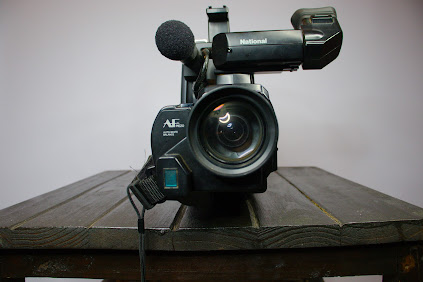








.png)







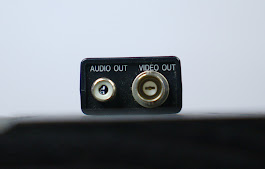
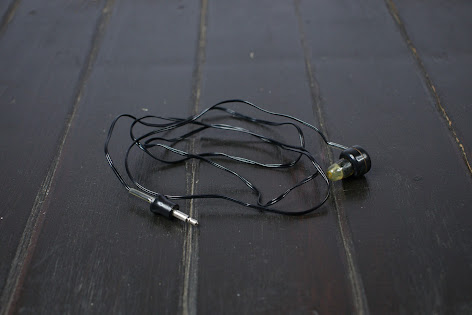













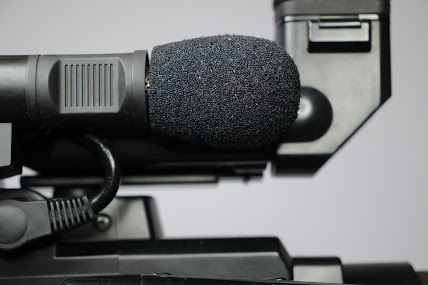



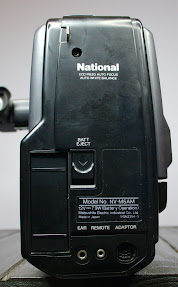


.png)







